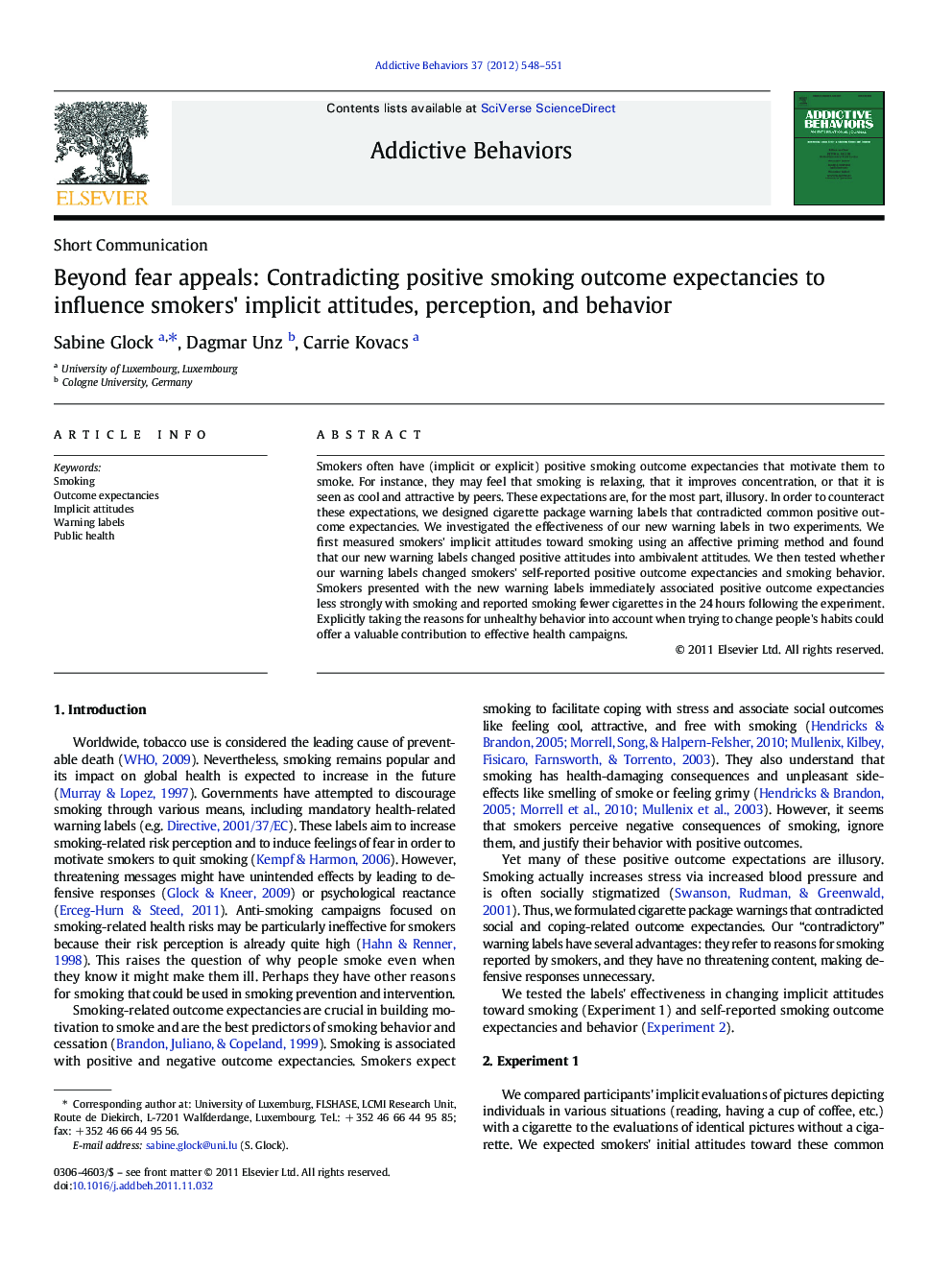| Article ID | Journal | Published Year | Pages | File Type |
|---|---|---|---|---|
| 899157 | Addictive Behaviors | 2012 | 4 Pages |
Smokers often have (implicit or explicit) positive smoking outcome expectancies that motivate them to smoke. For instance, they may feel that smoking is relaxing, that it improves concentration, or that it is seen as cool and attractive by peers. These expectations are, for the most part, illusory. In order to counteract these expectations, we designed cigarette package warning labels that contradicted common positive outcome expectancies. We investigated the effectiveness of our new warning labels in two experiments. We first measured smokers' implicit attitudes toward smoking using an affective priming method and found that our new warning labels changed positive attitudes into ambivalent attitudes. We then tested whether our warning labels changed smokers' self-reported positive outcome expectancies and smoking behavior. Smokers presented with the new warning labels immediately associated positive outcome expectancies less strongly with smoking and reported smoking fewer cigarettes in the 24 hours following the experiment. Explicitly taking the reasons for unhealthy behavior into account when trying to change people's habits could offer a valuable contribution to effective health campaigns.
Graphical abstractFigure optionsDownload full-size imageDownload as PowerPoint slideHighlights► Our anti-smoking warning labels contradict positive smoking outcome expectancies. ► The new labels decrease positive implicit attitudes toward smoking. ► They decrease social and coping-related positive outcome expectancies. ► They decrease short-term smoking behavior. ► Addressing the reasons people engage in unhealthy behavior can help change it.
